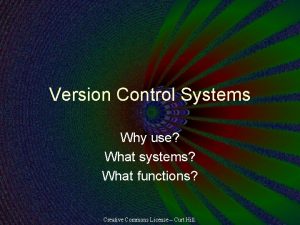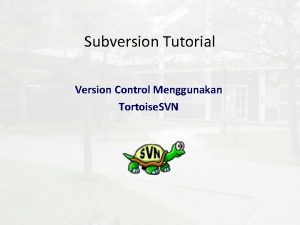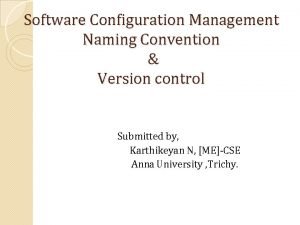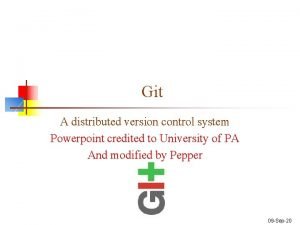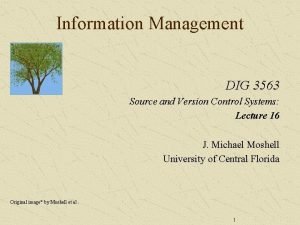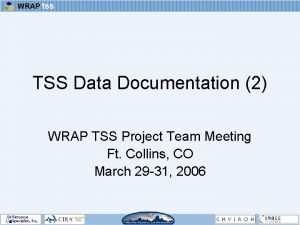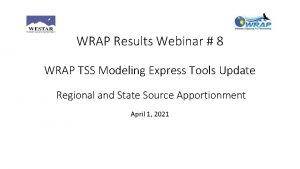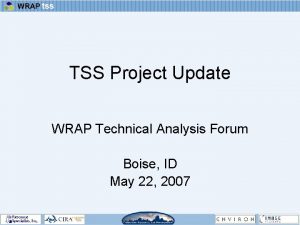TSS Version Control WRAP TSS Project Team Meeting





- Slides: 5

TSS Version Control WRAP TSS Project Team Meeting Ft. Collins, CO March 29 -31, 2006

Purpose • Periodic updates to the TSS databases and tools will occur after October 2006 for the following reasons: – Additional information (new model runs or user-uploaded analyses? ) – Corrections to existing information • SIP writers must be able to access the EXACT data set and tool set used in their SIPs

Proposed Method • Periodically take a “snapshot” of the TSS databases and tools, including: – Current monitoring, modeling, emissions data and associated documentation – Tools as they currently exist (versions may have different-looking tools) – Relevant in-house GIS layers and URLs to relevant outside GIS layers – External analyses uploaded to the TSS • Keep each version (“snapshot”) of the TSS untouched under a unique URL – changes to underlying data will not be made even if data sets are revised (e. g. , IMPROVE corrects flows which affect concentrations) • At any time there will exist these versions of the TSS available on-line: – Current (contains most up-to-date data/tools, but may change without notice) – Version 1 (date specified) – Version 2 (date specified) – … Version N (date specified) • All TSS products will ultimately be branded with the TSS version number/date

Anticipated Version Schedule • Current – This option will always be available and will include most recent updates as they occur • Version 1 – October 2006 – State of TSS at the end of this phase of the project • Version 2 – Spring 2007? – Anticipated after all final updates to emissions and modeling • Version 3 – December 2007? – Anticipated after SIP process is complete • Annual versions thereafter

Implications • Users can always look at most recent data, but must be aware that it could change without notice • TSS Versions will remain intact, essentially as separate (though transparent) web sites, so SIP reviewers can always look up original data products • States need to understand the differences between versions, and should select the most recent Version number (not “Current”) when beginning their SIPS • What are implications with EPA and stakeholders if different states use different versions? – States may start their SIPs at different times – Interpretation of data not expected to change significantly between versions
